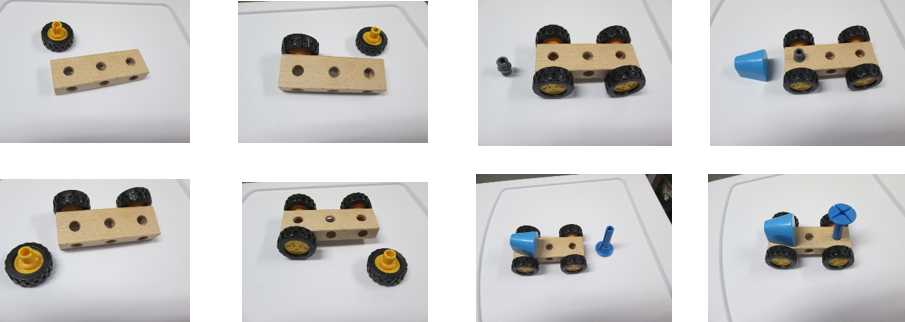Sustained attention to task
Visual Sequencing Skills

We began incorporating use of digital task cards in treatment to promote increased use of Executive Functions including:
- Sustained attention to task
- Task organization
- Working memory
- Self monitoring
We found the children were better able to pace their level of activity (some were under-aroused while others tended to be over-aroused) as they sustained attention to the digital media.
Given this type of consistent response of improved executive functions when assembly tasks were presented in the digital mode, we expanded our scope to include a greater emphasis upon devising ways to present these visual images.
We specifically wanted to facilitate use of language whose content and context included, “What is it?” and “Where is it?”, the two divisions of the visual streams of visual perception represented in the cortex of the brain. This is why we focused on developing images with greater emphasis upon spatial orientation and visual sequencing as needed for reading and math skills.
We found this approach to work best in use of construction toys, and began to develop a robust library of digitized construction folders. When the steps for assembly were broken down to correspond with the cognitive age of the child, greater progress was shown.

The project shown below was assembled from a Quercetti set and used with our older children to introduce concepts of working in three dimensions. The concept of an object of necessity being held in different points of action (such as the “L” bracket) was able to be used in support of spatial concepts (i.e. planes of motion) needed for success in school.


The process of digitizing the construction toys allowed us to use multiple steps for the more complex items such as the one above that had 26 steps. Meanwhile while fewer steps were used for the more simple projects that focused primarily upon visual discrimination of size, shape, and color. This allowed us to grade our projects. For example, Flower Garden projects were given several levels so that it could have appeal to a wider age range. The Level 1 project shown below, had only 4 steps needed for completion.
You’re invited to visit our on-line store at our website to see the variety of projects that have been digitized, allowing for greater success for the children in terms of hand function, motor planning, and visual perceptual skills.


Comments are closed.